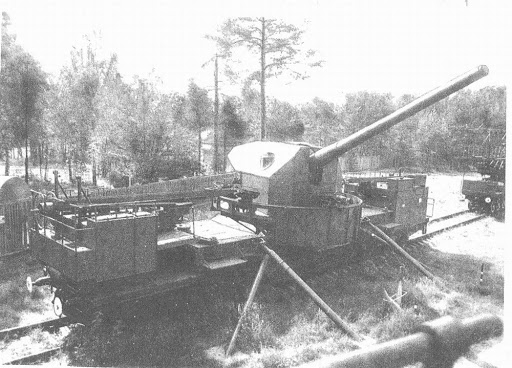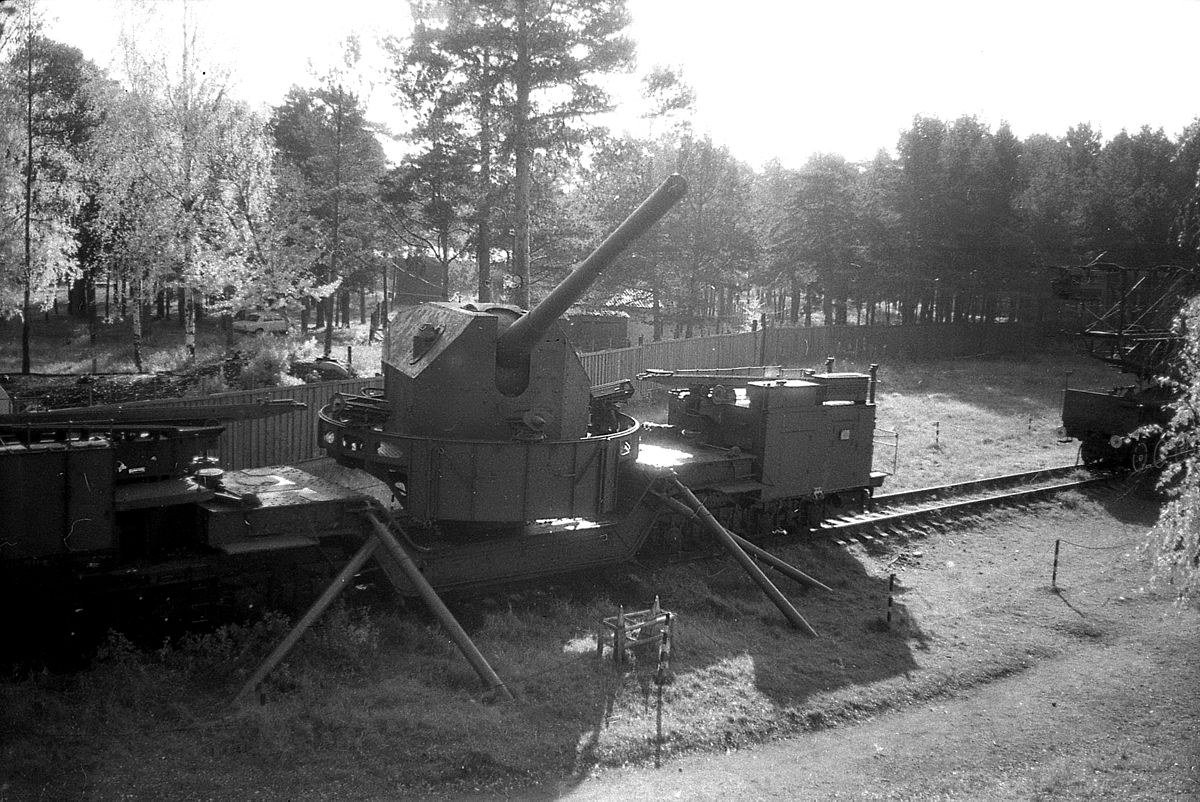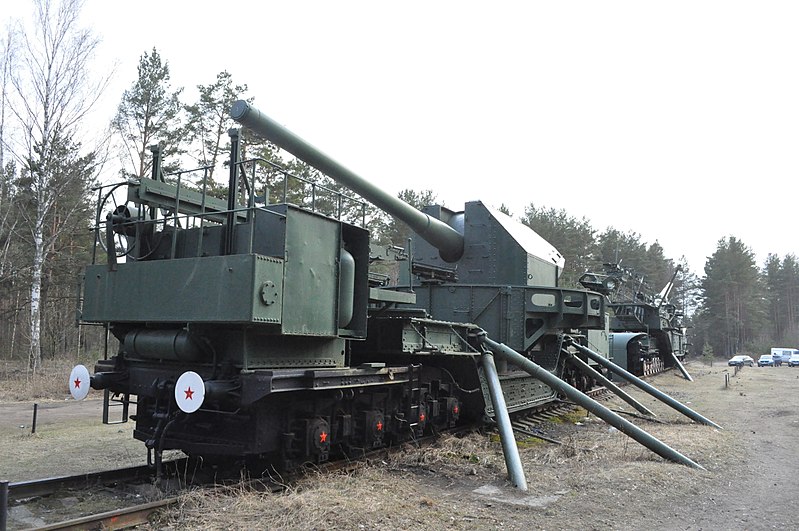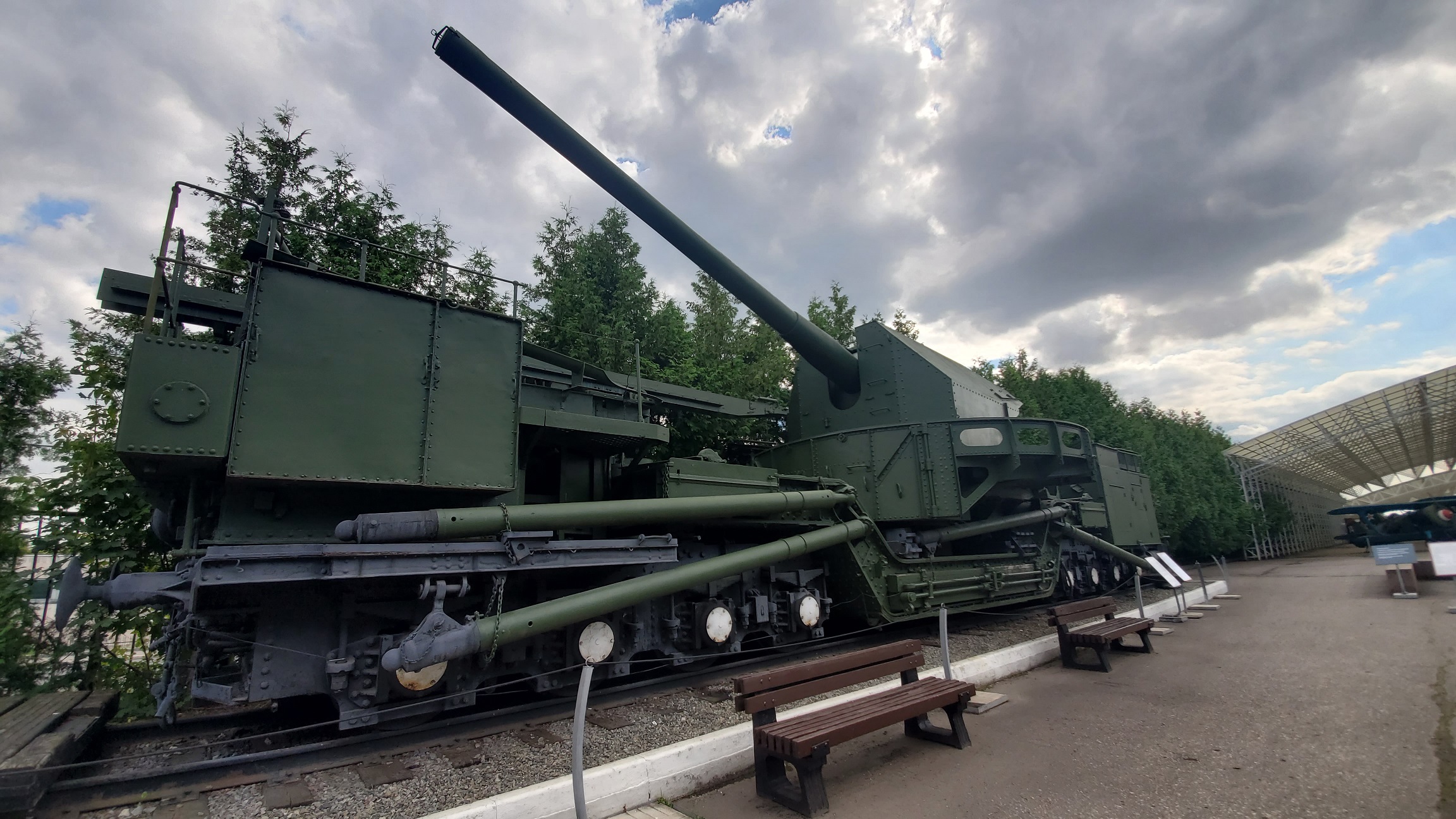History of the TM-1-180 Railway gun
TM-1-180 is a Soviet – made railway artillery system, developed on the basis of a powerful 180-mm naval gun B-1-P. It was actively and successfully used in the Second World War.
In 1931, a group of specialists from the Artillery Section of the NTC UVMS began developing a preliminary design for a new conveyor that would have a circular fire. The first studies were not entirely successful, and the Artillery Marine Research Institute (ANIMI) was included in the research. In 1932, the institute managed to develop a technical assignment for the design of the TM-1-180 conveyor, entrusted to the Leningrad Metal Plant (LMZ).
The first four conveyors TM-1-180 were manufactured by LMZ in 1934. Another 16 conveyors left the gates of the Nikolaev plant number 198 (14 in 1939 and 2 in 1940). These conveyors were somewhat different from the LMZ conveyors. Even during the manufacture of the first series of TM-1-180, one of the leading developers of the LMZ Petrikevich made some changes to the initial project, which made it possible to increase the rate of fire by 25% and simplify the fire control.

During the war years, 3 separate railway artillery batteries (ozhdab) of 180-mm TM-1-180 installations were operating as part of the Leningrad Front: 12th, 18th and 19th.
At the beginning of the war, the 16th battery was part of the Novorossiysk naval base ( Black Sea Fleet ), where it took an active part in defensive battles, including during the Tuapse operation.
Dislocation of 180-mm separate railway artillery batteries of the Coastal Defense of the Red Banner Baltic Fleet of the USSR at the beginning of the Great Patriotic War:
12th (4 TM-1-180) together with 11 ozhdab (3 TM-1-14) – on the Pakri peninsula ( Estonia ), covered the entrance to Tallinn;
17th (4 TM-1-180) together with 9 ozhdab (3 TM-3-12) – on the Hanko Peninsula, as part of the eponymous Soviet naval base;
18th (4 TM-1-180) – in Libau (Latvia);
19th (4 TM-1-180) – was re-equipped at the base in Lebyazhiy, entered service in August 1941.
Subsequently, the 17th Piece (together with the 9th) were blocked on the Hanko Peninsula during its defense in 1941, and later, during the evacuation of the garrison of the naval base, their transporters had to be disabled. The rest of the TM-1-180 went through the entire war without losses.
In January 1942, the 12th, 18th and 19th batteries TM-1-180, along with the 11th battery TM-1-14, were merged into the 1st separate artillery division. This division and six divisions of rail guns caliber 152 -100 mm, in turn, totaled 101 th marine railway artillery brigade – the most powerful artillery units of the Leningrad Front. By order of the NK of the Navy dated January 22, 1944, the 101st Naval Railway Artillery Brigade was reorganized into the 1stthe guards naval railway artillery brigade, and for the successful hostilities near Krasnoye Selo the brigade was given the honorary name “Krasnoselskaya”. The brigade performed the tasks of counter-battery combat against German artillery, fire support for Soviet troops, and providing sea communications between Leningrad and Kronstadt.
In 1943, the brigade’s artillery mounts took part in breaking the blockade of Leningrad, and later were involved in the Krasnoselsko-Ropsha and Vyborg operations, in the battles near Libava during the liquidation of the Courland cauldron, and storming of Koenigsberg.
Installations TM-1-180 remained in service until 1961. In this regard, it should be noted that in 1945, the repaired installations of the former 17th battery from the Hanko Peninsula were commissioned. They entered service with the newly formed 292nd battery.
Remaining Pieces:
A pair of TM-1-180 transporters are located in Lebyazhie – as part of the Krasnaya Gorka Fort memorial complex, which played a key role in the defense of the Oranienbaum bridgehead, as well as in the subsequent offensive of Soviet troops during the Krasnoselsko-Ropsha operation and others.
One transporter TM-1-180, from the 12th separate railway artillery battery of the Coastal Defense of the Red Banner Baltic Fleet of the USSR, was installed on the site of military equipment of the Central Museum of the Great Patriotic War of 1941-1945, as part of the exposition of the Victory Park memorial complex on Poklonnaya Hill in Moscow.








